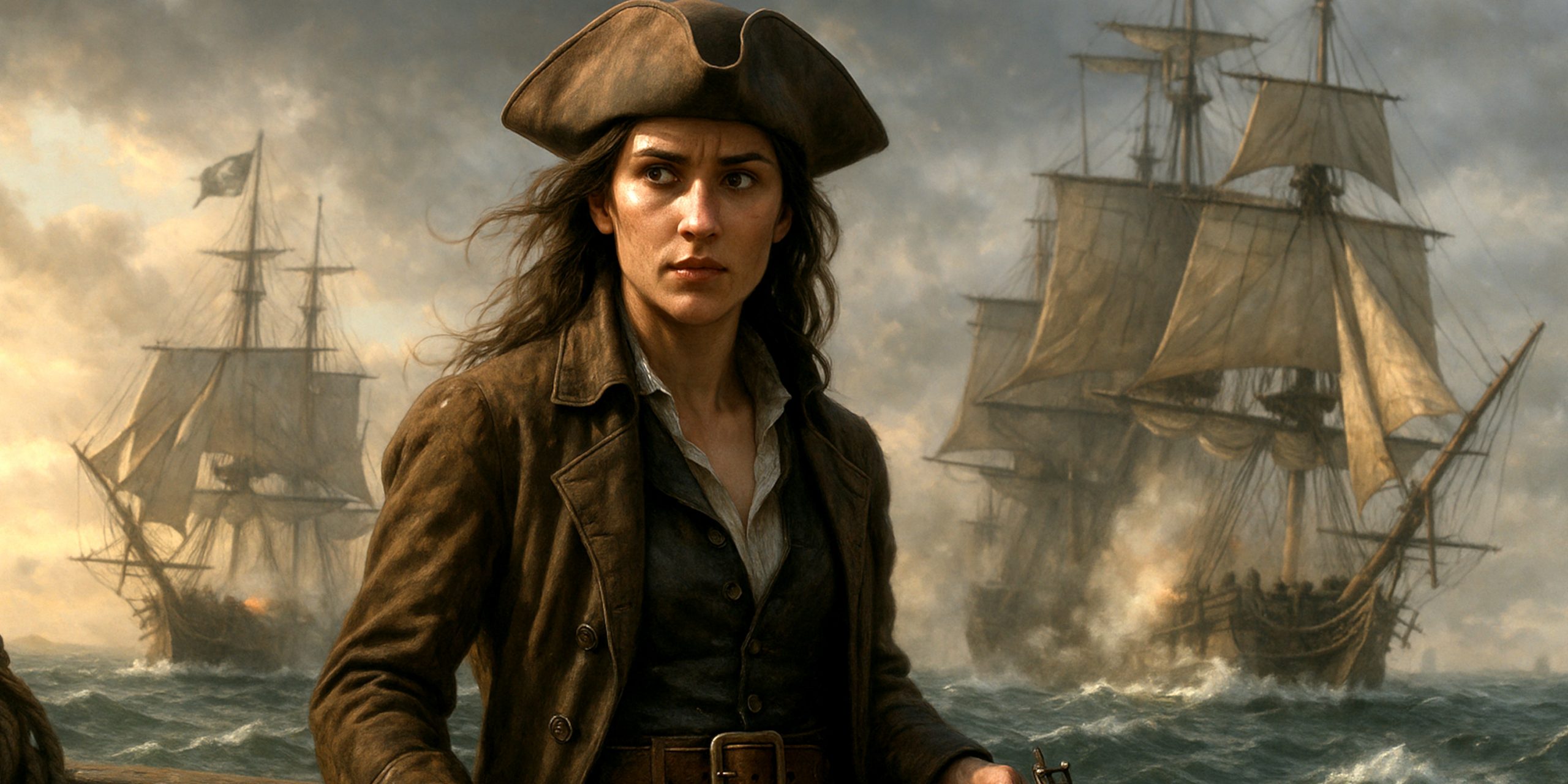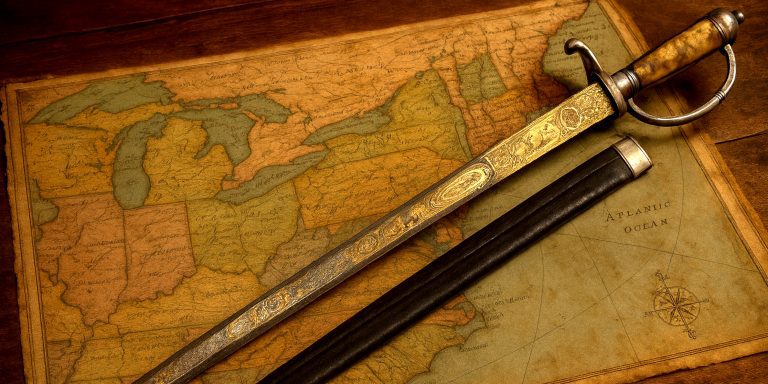
A historian’s appraisal by a woman who has spent far too long squinting at nineteenth century pulp fiction
Fanny Campbell may be the most successful pirate who never existed. Her exploits spread through New England, crossed the Atlantic, fascinated readers, annoyed moralists, and shaped an entire tradition of swashbuckling adventure. She appeared in 1844 in Maturin Murray Ballou’s novel Fanny Campbell, The Female Pirate Captain, which pretended to be a true account and was devoured by a public hungry for heroism with a rebellious female edge. I have come to enjoy her as one enjoys a half remembered family legend. You know it is embroidered within an inch of its life, yet you still lean in.
Despite her fictional origin, Fanny Campbell deserves a proper historical treatment. She tells us a great deal about antebellum America, gender anxieties, maritime lore, and the Victorian obsession with buccaneers. She is also immensely entertaining, which should never be held against her.
Origins and Background
Ballou published her story in Boston, placing her birth somewhere around 1720 in rural Massachusetts. The setting was comfortably patriotic, aimed at readers who preferred their pirates bold but not too foreign. According to the narrative, she trained herself in navigation, swordsmanship, and horsemanship. This is already generous, given that most real sailors of the eighteenth century struggled with even basic literacy. Still, one has to admire the ambition.
Her fictional turning point comes when her fiancé, William Lovell, is captured by pirates. Fanny disguises herself as a man, boards a privateer, and joins the hunt. The disguise is a familiar device in older adventure writing, although, judging by illustrations, her ability to appear convincingly male must have relied on some very forgiving lighting.
Ships, Voyages and the Bounty of the Sea
Ballou’s novel gifts Fanny a series of vessels. The most noted is the Adventure, a swift schooner that she eventually commands. In the spirit of good nineteenth century melodrama, she captures several enemy ships, releases prisoners, reclaims treasure, and inspires devotion among her crew.
The Adventure sails through the Caribbean, the Gulf, and the Atlantic coast. Though the geography is often suspiciously convenient, it gives modern readers a lively picture of how American audiences imagined seafaring life. There is talk of rich Spanish prizes, villainous captains, and holds packed with plunder. Fanny’s supposed bounty varies from gold coins to trade goods, usually described in vague terms that suggest Ballou knew more about Boston printing presses than pirate inventories.
Weapons and Fighting Style
Fanny Campbell fights with pistols, cutlasses, and the occasional boarding pike. Ballou’s descriptions are wonderfully dramatic, if not strictly practical. She is depicted as unusually accurate with a flintlock pistol. Given that real pistols of the era could barely hit a barn door in a stiff breeze, this is optimistic, though charming.
Her cutlass combat is described with the clean precision of a theatrical duel. No talk of elbows, splinters, or buckling knees, which every sailor’s memoir insists were universal. But she is written as quick, focused, and courageous. By the standards of fictional piracy, that is entirely within the rules.
Battles and Encounters
Her major engagements include the rescue of her fiancé from a hostile pirate crew, several chases through Caribbean waters, and a handful of boarding actions. The battles rise to the occasion whenever Ballou needed another chapter.
One scene has her outmanoeuvre a stronger ship by tacking sharply into the wind. It is a fine moment for anyone who appreciates a well turned piece of nautical propaganda. Another has her hold a deck almost single handed while shouting instructions to her crew. You can practically hear the applause from the parlour rooms of 1844.
A favourite contemporary remark captures the tone. The Boston Notion described her as a woman of “undaunted spirit whose adventures stir the blood”. My own blood occasionally stirs at the historical liberties taken, but that is part of the charm.
Contemporary Reception and Quotes
Fanny Campbell became a bestseller, reprinted in multiple editions and translated widely. Newspapers commented with varying degrees of admiration and alarm.
One critic in The New York Mirror called her story “a lively tale that may prompt improper fancies among the youth”. I am delighted by the panic. Another declared her “a heroine of rare vigour, though born from a pen more than any ocean”. A polite nineteenth century way of saying that she is fictional but irresistible.
Readers adored her. Women in particular commented on her “spirit” and “resolution”, which suggests she filled a cultural gap long before modern feminist scholarship arrived to point it out.
Treasure, Myth and Legacy
There is no definitive list of her plunder, which is convenient for Ballou and mildly frustrating for historians. The treasure functions symbolically. What matters is that she retrieves what was taken, restores justice at sea, and proves herself the equal of any man with a sabre tucked into his belt.
Her legacy reached beyond literature. Fanny Campbell influenced later fictional pirates, fed popular image making, and arguably paved the way for characters like Anne Bonny and Mary Read to be rediscovered by historians. She occupies a space between folklore and early female empowerment, even if she was built entirely out of ink and bravado.
Fate and Final Years
Ballou concludes her tale with Fanny retiring respectably, marrying her rescued fiancé, and settling into domestic life. The pivot from pirate captain to householder feels as abrupt as it sounds. Every time I read it, I suspect Ballou’s editor leaned heavily on the ending, worried that a permanent female pirate captain might upset the furniture.
Her fictional fate therefore fits neatly with nineteenth century narrative expectations. She has her adventure, proves her worth, and then withdraws gracefully before anyone begins asking awkward questions about long term ambition.
Historical Significance
Fanny Campbell is firmly a creation of her period, yet she continues to matter. She demonstrates how the nineteenth century romanticised piracy, reshaped gender roles for entertainment, and sold thrilling stories to a reading public craving escape.
She also provides a foothold for examining real women at sea. Their lives were far less glamorous, usually ending in drudgery or quiet defiance rather than treasure chests. But Fanny’s popularity helped later historians take their presence seriously.
As with many invented figures, her truth lies not in accuracy but in influence. She reflects the hopes and projections of her first readers, and, if you have a taste for maritime melodrama, remains a spirited companion.



